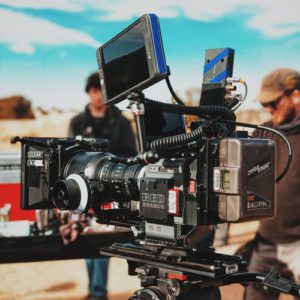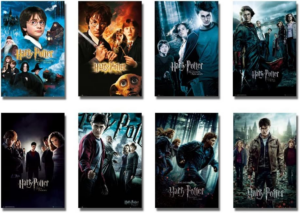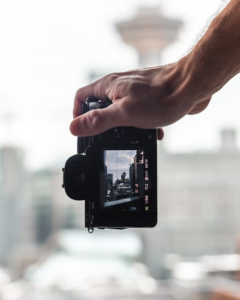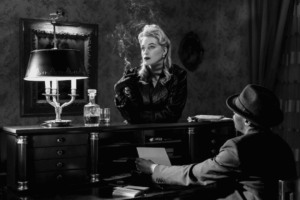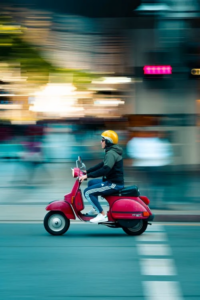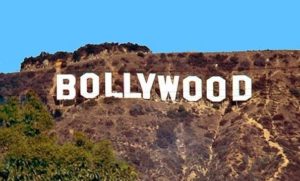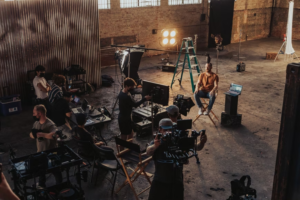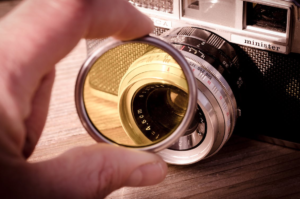Imagery is the language poets, novelists, and other writers use to create images in the reader’s mind. Imagery includes figurative and metaphorical language to improve the reader’s experience through their senses. Describing sensory experiences through write-ups and text can be hard at times. Using imagery, writers can vividly describe experiences, actions, characters, and places through written language. Uncover the art of evoking emotions through words.

Imagery is the presentation and utilization of visual images and objects perceived through sight. In film, imagery is a very strong tool. It can represent an idea, a character, an event, or even a mood. It can be utilized to bring about a certain mood for the spectators. For example, director Roman Polanski presents a lot of death imagery in Rosemary’s Baby to force the spectators to create anxiety. Usually, imagery is presented in the film in techniques such as lighting (how the lighting is used), editing (the cutting of scenes), camera shots (how the shot is framed), and cinematography (the style of filming). These techniques use color, lines, shadows, and angles to generate a style that best represents what the director wants to depict. For example, in scenes such as a character who is sick with cancer and has no energy left but lies on his bed all day, this could be portrayed using dark colors like blacks, browns, or greens.
How Imagery Plays a Role in Filmmaking?
Imagery plays a fundamental and multifaceted role in filmmaking, impacting various aspects of the craft, from storytelling to emotional engagement. Here’s how imagery impacts filmmaking:
Visual Storytelling
Imagery is a primary means of conveying the narrative in film. Filmmakers communicate the plot, characters’ emotions, and thematic elements through visual elements like composition, camera movement, and framing.
Emotional Resonance
Powerful imagery can evoke a wide range of emotions in the audience. Using color, lighting, and camera angles can intensify the viewer’s connection to the characters and the story, making it more engaging and emotionally impactful.
Atmosphere and Mood
Imagery is instrumental in establishing the mood and atmosphere of a film. Filmmakers can use visual techniques to create a sense of tension, romance, horror, or any other desired emotional tone.
Character Development
The visual representation of characters, including their costumes, makeup, and body language, helps define their personalities, backgrounds, and arcs. Well-crafted imagery contributes to character depth and growth.
Setting and World-Building
Imagery is essential for transporting the audience to different settings, periods, and fictional worlds. Production design, location choices, and visual effects create immersive environments that enhance the storytelling.
Symbolism and Metaphor
Imagery can introduce symbolism and metaphor into a film. Objects, settings, and visual motifs can carry deeper meanings that enrich the narrative and add layers of interpretation.
Visual Effects
CGI and practical effects allow filmmakers to create stunning visual sequences and bring to life elements that are otherwise impossible or dangerous to film. This expands the creative possibilities in storytelling.
Genre and Style
Different film genres rely on specific imagery to meet audience expectations. For example, a science fiction film may feature futuristic technology, while a film noir employs stark lighting and shadows for a particular visual style.
Editing and Montage
Imagery also plays a role in the editing process. The arrangement of shots and images, known as montage, can create meaning, rhythm, and pacing, shaping the audience’s perception of time and events.
Visual Aesthetic
Directors and cinematographers often develop unique visual aesthetics for their films. These aesthetics, defined by camera techniques, color palettes, and framing choices, contribute to the film’s identity and the director’s signature style.
Iconic Imagery
Memorable imagery can become iconic, staying in the minds of audiences long after seeing the film. Iconic shots or moments are often associated with the film itself and can become cultural touchstones.
Audience Engagement
Visually captivating scenes and sequences can hold the audience’s attention and draw them into the story. Strong imagery can make a film more memorable and leave a lasting impression.
Imagery is a cornerstone of filmmaking, serving as a potent tool for conveying information, emotion, and artistic expression. Filmmakers harness the power of imagery to immerse viewers in their stories, create memorable moments, and make films that resonate with audiences on both intellectual and emotional levels.
How Imagery Impacts Film Making?
Imagery is the backbone of filmmaking, influencing every aspect of the cinematic experience. From visually narrating the storyline and shaping emotional resonance to establishing atmosphere and character depth, imagery is the language of cinema. Through composition, lighting, visual effects, and cinematography, filmmakers craft a visual tapestry that immerses the audience in the story, making it something to watch and an emotional and sensory journey to remember. Iconic imagery, in particular, can transcend the screen, becoming etched in cultural memory and defining a film’s legacy. In short, imagery is the cinematic canvas upon which storytelling, emotion, and artistic expression are painted, elevating the impact and significance of filmmaking.
What is Effective Imagery in Films?
Using powerful visuals in your movie is essential to engage the onlookers and create a memorable experience for the viewer. Knowing what will work best with all the different images can be hard.
The following are a few most important features of effective imagery in films:
Image Placement
Strong image placement is vital to any movie but is especially essential in documentaries. The filmmaker should decide whether to place robust imagery at the beginning or end of a scene.
Beginning
This technique offers a powerful hook that pulls people into the scene. From beginning to end, the footage builds a story so that viewers sit through the whole film, even if they are not captivated by the topic at first glance.
End
Placing mighty imagery at the end of a scene brings about a dramatic and emotional climax that leaves a lasting impression on viewers long after the film ends. This makes it undemanding to hold viewers’ attention throughout the film since it won’t matter if the audience drifts off during other scenes.
Visual Metaphor
Charlie Chaplin’s film Modern Times is a classic example of visual metaphors. In this movie, the factory worker is exhibited as a slave to the machine. He is used as a metaphor for how technology can enslave man and take him away from his dignity.
The Shot/Reverse Shot
This is a concept in which the shot moves back and forth between two characters while they converse, normally on opposite sides of the screen to show who is conversing; it is often utilized in documentaries to make it explicit who is being interviewed.
Symbolic Objects
In films “objects” play a significant role in conveying deeper meanings and themes to the audience. Filmmakers carefully choose these objects to represent ideas, emotions, or character traits, adding layers of symbolism and subtext to the story.
Mise-en-scène
In films this concept refers to the careful arrangement of visual elements within a scene. It encompasses everything from set design, lighting, costumes, and actors’ positioning. Mise-en-scene influences the mood, atmosphere, and storytelling, allowing filmmakers to convey emotions and themes through the visual composition of each frame. It’s a crucial aspect of cinematic storytelling.
What is Computer-Generated Imagery in Film?
Computer-generated imagery (CGI) in the film uses digital technology to create visual effects, characters, and environments that appear realistic or fantastical. CGI has revolutionized filmmaking, enabling the creation of scenes and creatures that would be challenging or impossible to achieve with practical effects. It enhances storytelling and visual spectacle in movies.
What are Its Uses?
Before computer-generated technology, special effects were made with real-life practical effects. Today, CGI is often more cost-effective. Filmmakers use CGI in several ways:
Character Creation
CGI is often used to create fantastical or non-human characters that would be impossible or impractical to achieve with practical effects or makeup. Examples include Gollum in “The Lord of the Rings” and the Na’vi in “Avatar.”
Environments
CGI can be used to create entire worlds and environments. This is particularly common in science fiction and fantasy films. For instance, the alien landscapes in “Avatar” are primarily CGI-generated.
Special Effects
CGI creates various special effects, such as explosions, fire, smoke, and water simulations. These effects can add realism and excitement to action sequences.
Digital Doubles
CGI can create digital versions of actors, known as digital doubles. These digital doubles can perform dangerous or impossible stunts without risking the safety of the actual actors.
Enhancing Practical Effects
CGI is often used to enhance practical effects. For example, a practical explosion can be enhanced with CGI to make it more dramatic and cinematic.
Aging and De-Aging
CGI can make actors appear older or younger. This technology has been used in films like “The Curious Case of Benjamin Button” and the de-aging of actors like Robert De Niro in “The Irishman.”
Creature Effects
CGI is commonly used to bring creatures and monsters to life. This includes everything from the dinosaurs in “Jurassic Park” to the dragons in “Game of Thrones.”
Vehicle and Aircraft Sequences
CGI is used extensively in scenes involving vehicles and aircraft. This includes car chases, space battles, and aerial dogfights.
Weather and Natural Phenomena
CGI can create realistic weather conditions and natural phenomena like tornadoes, hurricanes, or earthquakes.
Set Extensions
Filmmakers use CGI to extend or modify physical sets. This can save on production costs and allow for more creative control over the look of a scene.
Backgrounds and Matte Paintings
CGI can replace or enhance traditional matte paintings and create realistic backgrounds for scenes.
Visualizing Abstract Concepts
In films with complex or abstract concepts, CGI can create visual representations that help the audience understand the presented ideas.
Digital Crowds
In scenes requiring large crowds, CGI can be used to create digital extras, making it appear that many more people are present than were actually on set.
Medical and Scientific Visualization
In films with a medical or scientific focus, CGI can visualize processes and phenomena that would be difficult or impossible to film in real life.
Time Travel and Alternate Realities
CGI often creates visually striking sequences that depict time travel, alternate realities, and other surreal concepts.
Overall, CGI has become an integral part of modern filmmaking, allowing filmmakers to push the boundaries of storytelling and visual effects in previously unimaginable ways.
Examples of Computer Generated Imagery
Jurassic Park (1993)

Directed by Steven Spielberg, “Jurassic Park” is known for its groundbreaking use of compositing to bring dinosaurs to life. The film seamlessly blends CGI dinosaurs with live-action actors and environments, creating a realistic and thrilling experience for audiences.
Jurassic Park 3d Extended Trailer
[Jwatchnow link=”https://www.amazon.com/Jurassic-Park-Sam-Neill/dp/B009CGKW10/ref=sr_1_2?crid=17FRO4605BESI&keywords=jurassic+park&qid=1697400235&sprefix=jurrasic+park%2Caps%2C447&sr=8-2″ watchon=”Amazon”]
Avatar (2009)

Directed by James Cameron, “Avatar” is known for its groundbreaking use of CGI and compositing to create the alien world of Pandora. The film combines live-action footage with photorealistic CGI characters and environments.
Avatar | Official Trailer (HD) | 20th Century FOX
[Jwatchnow link=”https://www.amazon.com/Avatar-Sam-Worthington/dp/B0B6583PVV/ref=sr_1_2?crid=AFON9RKFF88R&keywords=avatar&qid=1697400487&sprefix=avat%2Caps%2C1099&sr=8-2″ watchon=”Prime Video”]
Toy Story (1995)

The first feature-length film directed by John Lasseter was made entirely with CGI animation. It inaugurated what is today the industry standard for animated films: 3D computer-animated characters and stories.
Toy Story | Original Trailer | Disney+
[Jwatchnow link=”https://www.amazon.com/Toy-Story-Tim-Allen/dp/B0094KTAEY/ref=sr_1_1?crid=37I3VPV3J6EIT&keywords=toy+story+movie&qid=1697433996&sprefix=toy+story+movie%2Caps%2C472&sr=8-1″ watchon=”Prime Video”]
Inception (2010)

Christopher Nolan’s mind-bending thriller employs striking imagery to explore the boundaries of dreams and reality, including scenes of folding cityscapes and zero-gravity fights.
Inception (2010) Official Trailer #1 – Christopher Nolan Movie HD
[Jwatchnow link=”https://www.youtube.com/watch?v=ArRqeBKBsEU” watchon=”YouTube Movies”]
The Shape of Water (2017)

Guillermo del Toro’s romantic fantasy film utilizes imaginative and whimsical imagery to tell the story of a mute woman’s connection with a mysterious aquatic creature.
THE SHAPE OF WATER | Official Trailer | FOX Searchlight
[Jwatchnow link=”https://www.youtube.com/watch?v=B3qktVnca1Q” watchon=”YouTube”]
The Tree of Life (2011)

Directed by Terrence Malick, this film is known for its stunning and contemplative imagery that explores the creation of the universe, the origins of life, and the human experience.
THE TREE OF LIFE Official HD Trailer
[Jwatchnow link=”https://www.amazon.com/Tree-Life-Brad-Pitt/dp/B005MP28B2/ref=sr_1_1?crid=263FMA1GW7E0I&keywords=tree+of+life+movie&qid=1697434025&sprefix=tree+of+life+movie%2Caps%2C375&sr=8-1″ watchon=”Amazon”]
2001:A Space Odyssey (1968)

Stanley Kubrick’s science fiction masterpiece is celebrated for its iconic and visually groundbreaking imagery, especially in its depiction of space, technology, and the enigmatic monolith.
2001: A SPACE ODYSSEY – Trailer
[Jwatchnow link=”https://www.amazon.com/2001-Space-Odyssey-Douglas-Rain/dp/B002WS54G8/ref=sr_1_2?crid=2MMVWBN409IVI&keywords=2001+a+space+odyssey&qid=1697434371&sprefix=2001+%2Caps%2C464&sr=8-2″ watchon=”Prime Video”]
Pan’s Labyrinth (2006)

Guillermo del Toro’s dark fantasy film uses rich, imaginative imagery to blur the lines between reality and fantasy, emphasizing the escapism and brutality of its wartime setting.
PAN’S LABYRINTH – Official Trailer
[Jwatchnow link=”https://www.amazon.com/Labyrinth-English-Subtitled-Sergi-Lopez/dp/B003XC1OP2/ref=sr_1_6?crid=26MFJ605PBSE6&keywords=Pan%27s+Labyrinth+%282006%29%3A&qid=1697435296&sprefix=pan%27s+labyrinth+2006+%2Caps%2C780&sr=8-6″ watchon=”Prime Video”]
Blade Runner (1982)

Ridley Scott’s dystopian sci-fi classic is renowned for its neo-noir visual style, featuring breathtaking futuristic cityscapes, rain-soaked streets, and imaginative character design.
BLADE RUNNER 2049 – Official Trailer
[Jwatchnow link=”https://www.youtube.com/watch?v=bU6Sw7qYfDk” watchon=”YouTube Movies”]
Citizen Kane (1941)

Directed by Orson Welles, this classic film is known for its innovative use of deep-focus cinematography and visually striking compositions to tell the story of a newspaper magnate.
Citizen Kane (1941) Official Trailer #1 – Orson Welles Movie
[Jwatchnow link=”https://www.youtube.com/watch?v=78D9QosBAXM” watchon=”YouTube Movies”]
The Grand Budapest Hotel (2014)

Wes Anderson’s films are famous for their meticulously crafted and symmetrical imagery. This film, in particular, uses a distinct visual style to enhance its quirky storytelling.
THE GRAND BUDAPEST HOTEL – Official Wolrdwide Trailer HD
[Jwatchnow link=”https://www.youtube.com/watch?v=rpGlJhEw-_4″ watchon=”YouTube Movies”]
Apocalypse Now (1979)

Francis Ford Coppola’s war epic uses surreal and vivid imagery to depict the madness and horror of the Vietnam War, including the iconic “Ride of the Valkyries” helicopter scene.
Apocalypse Now | Official Trailer
[Jwatchnow link=”https://www.amazon.com/Apocalypse-Now-Marlon-Brando/dp/B0045INOCO/ref=sr_1_3?crid=3U57CVG2RLD73&keywords=Apocalypse+Now+%281979%29%3A&qid=1697435779&sprefix=apocalypse+now+1979+%2Caps%2C613&sr=8-3″ watchon=”Prime Video”]
Birdman (2014)

Directed by Alejandro González Iñárritu, this film is known for its continuous, single-shot appearance, which immerses the audience in the world of a washed-up actor trying to stage a comeback.
BIRDMAN – Official Worldwide Trailer
[Jwatchnow link=”https://www.youtube.com/watch?v=7KHHYg1D4CE” watchon=”YouTube Movies”]
These movies showcase how effective and memorable imagery can elevate the cinematic experience, immersing viewers in unique worlds and enhancing storytelling, emotion, and artistic expression.
Frequently Asked Questions
How Can I Explain Imagery?
Being individuals, we comprehend the world by engaging our senses—observing, listening, smelling, tasting, and touching. To capture this phenomenon in their literary creations, authors and poets employ vibrant language to stimulate these senses. This linguistic technique is known as imagery.
Videos
7 Movies Before and After Special Effects



